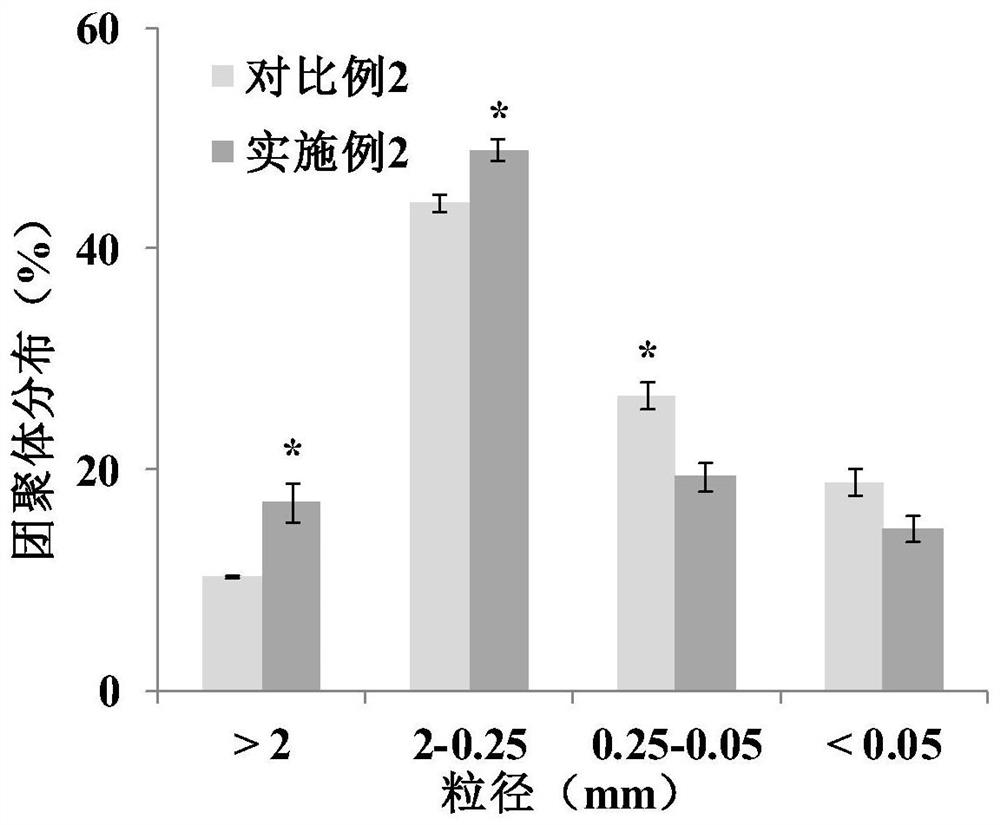A dry farming method for increasing oxygen and reducing emissions in paddy field
A technology for paddy field, rice and wheat, which is applied in land preparation methods, agricultural gas emission reduction, rice cultivation, etc., can solve the problems of reduced oxygen content and effective nutrient content in soil, unfavorable population construction in the early stage of rice growth, and reduced soil porosity, etc. Achieve the effect of promoting crop root growth, reducing the toxicity of reducing substances, and increasing planting density
- Summary
- Abstract
- Description
- Claims
- Application Information
AI Technical Summary
Problems solved by technology
Method used
Image
Examples
specific Embodiment approach
[0089] In this example, a production test was carried out at the democratic test base of the Institute of Cultivation and Cultivation of the Heilongjiang Academy of Agricultural Sciences in China during 2018-2019. The test site belongs to the first rice-ripening area in the north, the second accumulated temperature zone in Heilongjiang Province, and has a high degree of mechanization, which is suitable for the implementation of the method of the present invention. The specific implementation is as follows:
[0090] 1. Timely harvest in autumn. The rice harvester with straw crushing function and sprinkler device is used to harvest rice. The length of straw crushing is ≤10cm. After crushing, the straw evenly covers the ground, and the stubble height is less than 10cm.
[0091] 2. Plowing in the autumn of 2018 and reverse rotation in the autumn of 2019. Among them, in 2018, the conventional plow was used for plowing operations (soil moisture content 27.7%); in 2019, the reverse...
Embodiment 2
[0099] This example was carried out in 2018 at the Jiangxi Provincial Red Soil Research Institute Experimental Base in Jinxian County, Jiangxi Province, China. The experimental site belongs to the southern double-cropping rice area and is suitable for the implementation of the method of the present invention.
[0100] The specific implementation is as follows:
[0101] 1. Winter management
[0102] 1.1 Lime to improve the soil. After the late rice is harvested and the straw is crushed and returned to the field in full, lime should be applied as soon as possible. The lime material is slaked lime, and the dosage is 100kg per mu, and it is spread evenly. Lime should not be applied every year, only once every 3-4 years.
[0103] 1.2 Plowing before winter. After applying lime, plow and sun-dry as soon as possible to enhance the effect of lime, and the depth of plowing is 25cm. Plowing is carried out in conjunction with lime application, and it is plowed once every 3-4 years. ...
Embodiment 3
[0115] In this example, a test was carried out in Taicang City, Jiangsu Province, China in 2018. The test site belongs to the southern rice-wheat rotation area and is suitable for the implementation of the method of the present invention. The specific implementation is as follows:
[0116] 1. Harvest at the right time, crush the straw and evenly throw it back to the field. The rice harvester with straw crushing function and throwing device is used for harvesting. The length of straw crushing is ≤10cm. After crushing, the straw evenly covers the ground, and the height of straw stubble is ≤10cm. If the remaining stubble is too high and the straw crushing and throwing cannot meet the requirements, it is advisable to use the straw crushing and returning machine to carry out a straw crushing and returning operation.
[0117] 2. Plowing in rice season, dry rotary crushing and rotary tilling in wheat season. In the rice season, the conventional plow is used for plowing and the rota...
PUM
 Login to View More
Login to View More Abstract
Description
Claims
Application Information
 Login to View More
Login to View More - R&D
- Intellectual Property
- Life Sciences
- Materials
- Tech Scout
- Unparalleled Data Quality
- Higher Quality Content
- 60% Fewer Hallucinations
Browse by: Latest US Patents, China's latest patents, Technical Efficacy Thesaurus, Application Domain, Technology Topic, Popular Technical Reports.
© 2025 PatSnap. All rights reserved.Legal|Privacy policy|Modern Slavery Act Transparency Statement|Sitemap|About US| Contact US: help@patsnap.com



